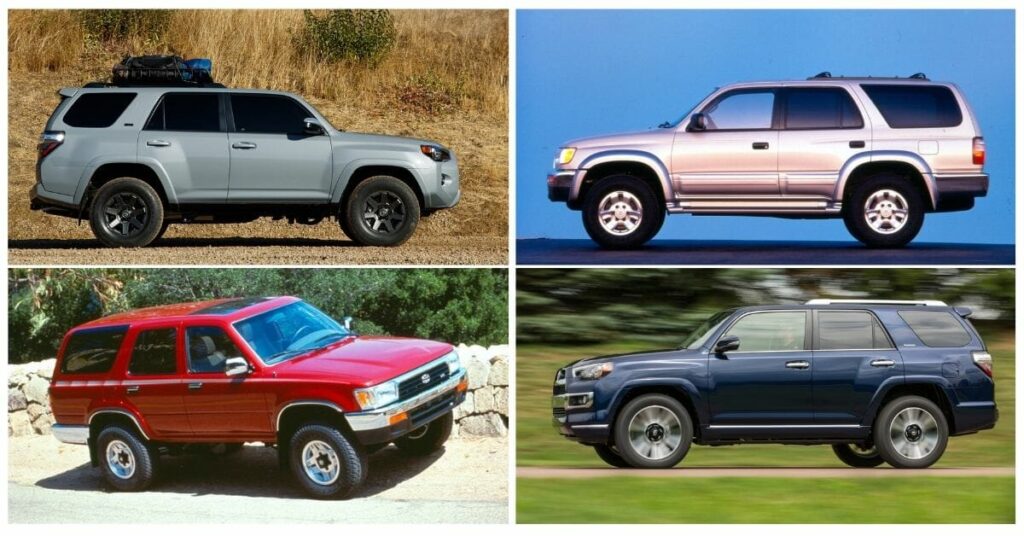
The Toyota 4Runner has established itself as a stalwart in the world of SUVs, embodying a spirit of off-road adventure, versatility, and reliability. Since its inception, this rugged vehicle has captured the hearts of outdoor enthusiasts and families alike. The Toyota 4Runner is a mid-size SUV that has been in production since 1984. It is known for its ruggedness, reliability, and off-road capabilities. The 4Runner has been through five generations, each of which has brought its own unique changes and improvements.
First Generation Toyota 4Runner (1984-1989):
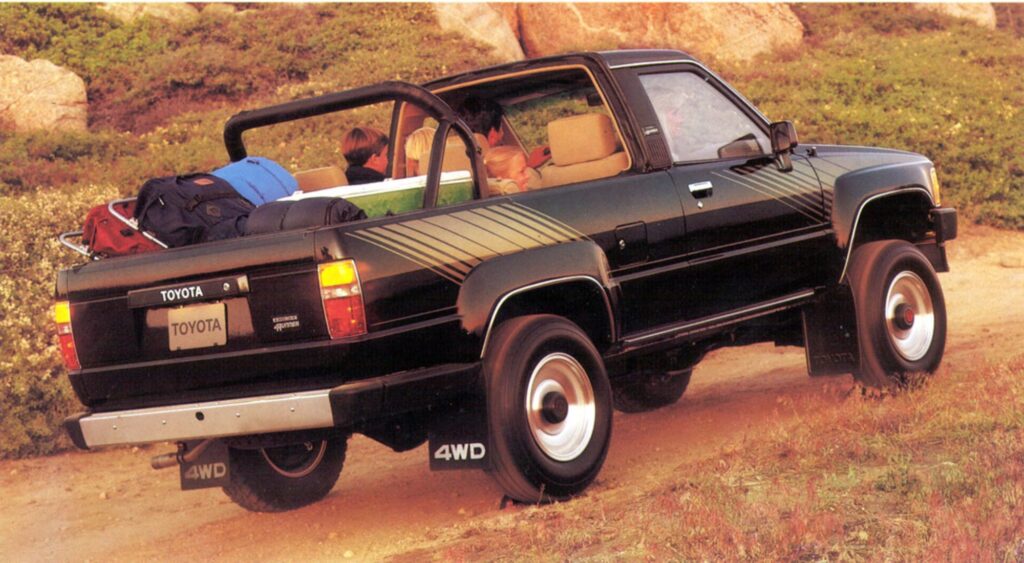
The story of the 4Runner began in 1984 when Toyota introduced the first-generation model. Based on the compact Hilux pickup truck platform, the 4Runner showcased a removable fiberglass roof and rear seats, transforming it into an open-air adventure companion. It was powered by a capable four-cylinder engine and featured impressive off-road capabilities, earning it a reputation as a formidable and reliable off-roader. The first generation 4Runner SUV was considered a little rough around the edges as it was built as a no frills high utility vehicle. Even in its first generations, Consumer Reports was very positive on this new SUV
Consumer Reports gave the first-generation Toyota 4Runner a score of 74 out of 100. They praised the 4Runner for its ruggedness, reliability, and off-road capabilities. However, they also criticized it for its lack of creature comforts and its dated design.
Here are some of the pros and cons of the first-generation Toyota 4Runner, according to Consumer Reports:
Pros:
Rugged and capable off-road vehicle
Reliable and well-built
Long-lasting
Large cargo space
Good resale value
Cons:
Lack of creature comforts
Poor fuel economy
Harsh ride
High purchase price
Second Generation (1990-1995):
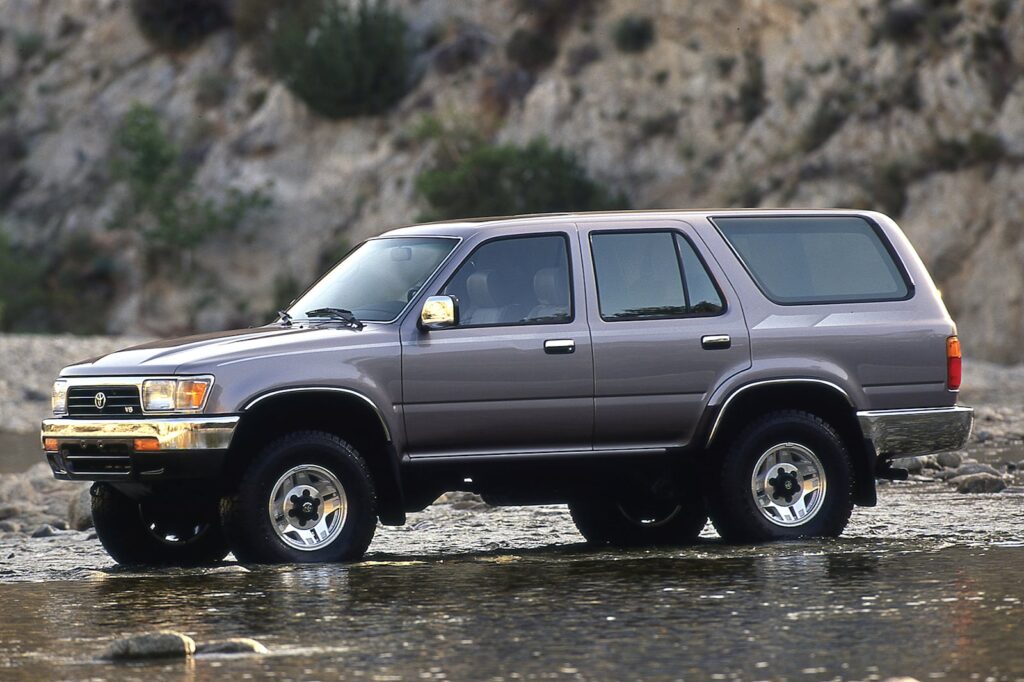
Building upon the success of the first generation, Toyota launched the second-generation 4Runner in 1990. This iteration showcased a more refined and aerodynamic design, along with increased interior space and comfort. The introduction of a powerful V6 engine option enhanced its performance on and off the road, appealing to a broader range of buyers.
Third Generation (1996-2002):
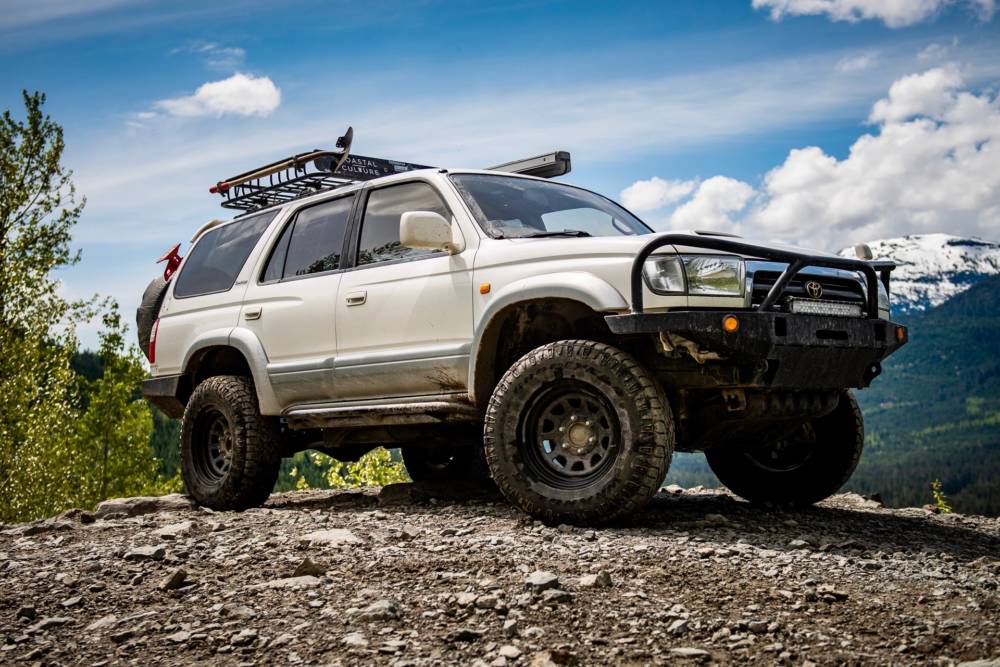
In 1996, the 4Runner underwent a significant transformation with the introduction of the third-generation model. It featured a more modern and rounded design, incorporating larger dimensions and improved handling. The addition of advanced safety features and enhanced off-road capabilities further solidified its position as a well-rounded SUV.
Fourth Generation (2003-2009):
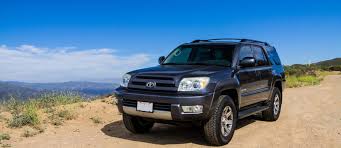
The fourth-generation 4Runner, unveiled in 2003, showcased a bolder and more muscular appearance. It introduced a refined interior with increased comfort and technological advancements. Toyota offered both V6 and V8 engine options, catering to diverse customer preferences. The fourth-generation 4Runner also introduced a more sophisticated suspension system, improving its on-road ride quality without compromising its off-road prowess. To this day many people still try and find the fourth gen 4runners with the V8 Motors.
The Toyota 4Runner was available with a V8 engine for a limited period within its production history. Specifically, the years when a V8 engine option was offered in the 4Runner were from 2003 to 2009, during the model’s fourth generation. It’s important to note that the availability of the V8 engine varied by trim level and specific model year. During this period, the 4Runner offered a 4.7L V8 engine as an alternative to the standard V6 engine, providing increased power and towing capability for those who desired it. The V8 option added an extra level of performance to the 4Runner, appealing to buyers seeking enhanced capabilities for towing or off-road adventures. However, from the fifth generation (2010 onwards), Toyota discontinued the V8 engine option in the 4Runner, returning to exclusively offering V6 engines.
Fifth Generation Toyota 4Runner (2010-2021):
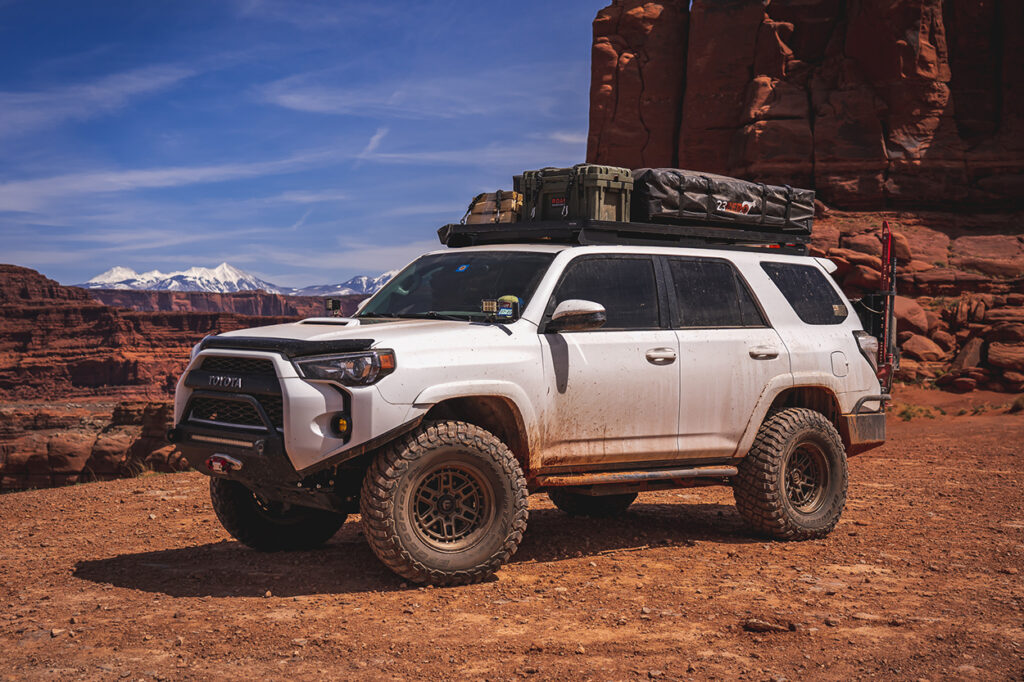
In 2010, Toyota unveiled the fifth-generation 4Runner, which retained its rugged DNA while receiving a more modern and aggressive design. It offered a range of trims, including the adventure-focused Trail Edition and the luxurious Limited. The fifth-generation 4Runner featured enhanced off-road capabilities, advanced technology features, and improved fuel efficiency. It continued to be a favorite among outdoor enthusiasts and families seeking versatility and dependability.
Toyota really stepped up its off-road game to compete directly with Jeep with the 5th Gen 4runner.
Here are the 6 notable off-road features introduced in the fifth-generation 4Runner:
- Kinetic Dynamic Suspension System (KDSS):
The 4Runner Trail Edition, introduced in the fifth generation, offered an optional Kinetic Dynamic Suspension System. KDSS allowed for improved wheel articulation by automatically adjusting the suspension stiffness based on the terrain. This feature enhanced the vehicle’s off-road performance and stability.
- Multi-Terrain Select:
The fifth-generation 4Runner introduced the Multi-Terrain Select system. This feature allowed drivers to optimize traction and control based on specific off-road conditions such as mud, sand, or rock. With the turn of a dial, the system adjusted throttle response, braking, and traction control to provide maximum traction in different terrains.
- Crawl Control:
Crawl Control was another off-road feature introduced in the fifth-generation 4Runner. This system acted as a low-speed cruise control for off-road situations, maintaining a consistent speed while navigating challenging terrain. It allowed the driver to focus on steering and obstacle negotiation without having to manually modulate the throttle.
- Locking Rear Differential:
The fifth-generation 4Runner included an optional locking rear differential on certain trims. This feature enabled power to be evenly distributed to both rear wheels simultaneously, improving traction and maneuverability in off-road scenarios where one wheel may lose traction.
- Off-Road Skid Plates:
The fifth-generation 4Runner featured sturdy skid plates for the engine, front suspension, and fuel tank to protect vital components during off-road adventures. These skid plates helped shield against damage from rocks, logs, and other obstacles encountered during off-road excursions.
- Approach and Departure Angles:
The design of the fifth-generation 4Runner incorporated improved approach and departure angles, allowing the vehicle to traverse steeper inclines and descents without scraping the front or rear bumpers. This design enhancement increased the vehicle’s off-road clearance and ability to tackle challenging terrain.
The 4Runner legacy continues as everyone looks forward to the new generation 4runner that should share a hybrid drivetrain with the newly released Toyota Tacoma.
If you are curious about the history of the 4Runner’s haul-anything pickup truck cousin read our complete history of the Toyota Tacoma.
